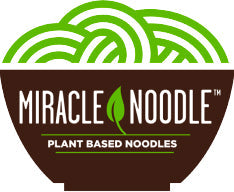Are You Eating for Nutrient Density or Just Empty Calories?

Nutrient density refers to the amount of nutrients in a given amount of food relative to its caloric content.
Foods that are nutrient-dense are high in essential nutrients like vitamins, minerals, fiber, and protein, and provide a wide range of health benefits.
It's important to note that nutrient density isn't just about phytonutrients (nutrients from plants); protein is also a crucial component, especially as you age.
Miracle Noodle is a perfect addition to a nutrient-dense diet because it allows you to subtract low nutrient-dense foods that have high calories, shifting the overall nutrient density of your diet to a higher state while ensuring you don't eat too many calories.
Examples of nutrient-dense foods include fruits, vegetables, LEAN protein sources, and nuts and seeds.
These foods are associated with reduced risk of chronic diseases like heart disease, diabetes, and certain types of cancer.
And while some minerals may not be as bioavailable (absorbed) in vegetables, plants still offer much more nutrient variety than animal foods.
Foods that are low in nutrient density provide a high amount of calories but little in the way of essential nutrients.
These "empty calorie" foods include sugary drinks, processed snacks and sweets, and fried foods and pasta, noodles, and rice.
Remember, it's important to approach nutrient density in a balanced way, and to be cautious when looking at nutrient density scores that are geared towards specific diets.
Combining nutrient dense foods while adding Miracle Noodle can help you achieve a more nutrient-dense diet without sacrificing taste or convenience and by subtracting the empty calories we would already eat in the form of high calorie noodles, pasta, and rice while simultaneously ensuring we don’t overeat.
To You and Yours in Health,
Jonathan Carp, MD
President - Miracle Noodle
P.S. Many have done the challenge of adding one meal per day of Miracle Noodle for 2 weeks while subtracting one high carb low nutrient dense food per day to move closer to your number one health goal. Give it a try!
Foods that are nutrient-dense are high in essential nutrients like vitamins, minerals, fiber, and protein, and provide a wide range of health benefits.
It's important to note that nutrient density isn't just about phytonutrients (nutrients from plants); protein is also a crucial component, especially as you age.
Miracle Noodle is a perfect addition to a nutrient-dense diet because it allows you to subtract low nutrient-dense foods that have high calories, shifting the overall nutrient density of your diet to a higher state while ensuring you don't eat too many calories.
Examples of nutrient-dense foods include fruits, vegetables, LEAN protein sources, and nuts and seeds.
These foods are associated with reduced risk of chronic diseases like heart disease, diabetes, and certain types of cancer.
And while some minerals may not be as bioavailable (absorbed) in vegetables, plants still offer much more nutrient variety than animal foods.
Foods that are low in nutrient density provide a high amount of calories but little in the way of essential nutrients.
These "empty calorie" foods include sugary drinks, processed snacks and sweets, and fried foods and pasta, noodles, and rice.
Remember, it's important to approach nutrient density in a balanced way, and to be cautious when looking at nutrient density scores that are geared towards specific diets.
Combining nutrient dense foods while adding Miracle Noodle can help you achieve a more nutrient-dense diet without sacrificing taste or convenience and by subtracting the empty calories we would already eat in the form of high calorie noodles, pasta, and rice while simultaneously ensuring we don’t overeat.
To You and Yours in Health,
Jonathan Carp, MD
President - Miracle Noodle
P.S. Many have done the challenge of adding one meal per day of Miracle Noodle for 2 weeks while subtracting one high carb low nutrient dense food per day to move closer to your number one health goal. Give it a try!
